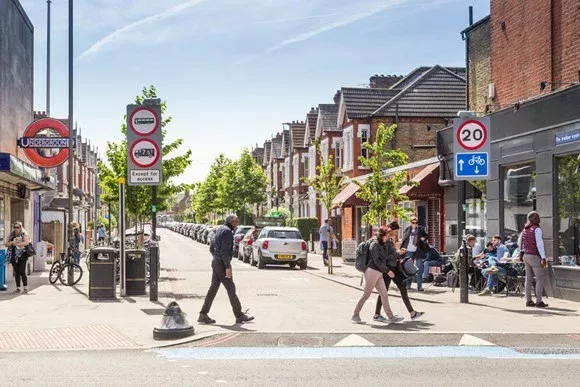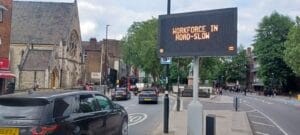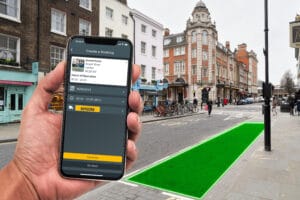Transport for London has launched local engagement on plans to introduce 65km of new 20mph speed limits within the Royal Borough of Greenwich, Royal Borough of Kensington and Chelsea, Lewisham, Southwark, Wandsworth, Merton, Bromley and Lambeth.
It says lowering speeds is a key part of the Mayor’s Vision Zero goal to eliminate death and serious injury from London’s transport network and enable more walking and cycling in the capital.
It adds that new speed limits would help to make a large area of south London “safer and more attractive” for people in these communities to live, work and play, encouraging more people out of their cars and to walk, cycle and use public transport more often. Enabling more people to use healthier and more sustainable forms of travel will be vital to reducing congestion and air pollution.
A 20mph limit would be introduced on sections of the following roads:
- A205: Woolwich Common, South Circular Road, Catford Road, Stanstead Road, London Road, Thurlow Road, Christchurch Road, Poynders Road, Dulwich Common
- A20: Eltham Road, Lee High Road, Lewisham Way
- A202: Queens Road, Peckham High Street, Camberwell Church Street, Camberwell New Road
- A2: New Cross Road, Old Kent Road
- A201: New Kent Road
- A100: Tower Bridge Road
- A200: Jamaica Road
- A3: Clapham Road, Kennington Park Road
- A3204: Kennington Lane
- A203: Stockwell Road
- A23: Camberwell New Road, Streatham Hill, Streatham High Road
- A214: Tooting Bec Road
- A24: Clapham Common South Side, Balham High Road, Upper Tooting Road, High Street Colliers Wood
- A4: Cromwell Road, Brompton Road
- A3220: Pembroke Road, Holland Road, Warwick Road, Redcliffe Gardens
- A232: West Wickham High Street
Subject to the engagement, works to introduce the new speed limits could begin in September 2023.
The new speed limits would be supported by new signs and road markings, and TfL would work closely with the Metropolitan Police Service (MPS) to ensure that drivers understand and comply with them. Existing speed cameras would have their enforcement threshold changed to reflect the new speed limit. Banners attached to streetlamps in the new 20mph areas would also be put in place to increase driver awareness. Following implementation, TfL plans to carry out monitoring to determine whether further measures to reduce vehicle speeds are required.
Collision data from around the world shows that the speed at which people are driving or riding is the single most important factor in whether a collision takes place and how severely people are injured. The police reported speed as a contributory factor in almost half of fatal collisions in 2020.
TfL is working in partnership with the Metropolitan Police on its commitment to improve safety on London’s roads and increase the levels of speed enforcement undertaken by the police, building the capacity to enforce up to one million speeding offences per year by 2024/2025. This year, 2022/23, the police will enforce around 650,000 speeding offences, an increase of around 30 per cent compared to the previous year.
Late last year, TfL launched local engagement on plans to introduce 28km of new 20mph speed limit on its roads within the boroughs of Camden, Islington, Hackney, Haringey and Tower Hamlets. TfL is now working to lower speeds on more than 140km of its roads by May 2024 in inner and outer London, after introducing 13.7km of new lower speed limit schemes in February 2022.
Will Norman, London’s Walking & Cycling Commissioner, said: “The facts are clear, a person hit by a vehicle at 20mph is five times less likely to be killed than at 30mph. We are determined to build a safer, greener London for everyone and the continued expansion of the 20mph programme on TfL roads is playing a vital role in making the capital’s roads safer for people to walk, cycle and use public transport. This forms an important part of the Mayor’s Vision Zero plan and we will continue to work with colleagues in boroughs to keep improving the safety of London’s roads.”
Penny Rees, TfL Head of Healthy Streets Investment, said: “We are determined to eliminate deaths and serious injuries from London’s roads in line with our Vision Zero goal. Millions of walking and cycling journeys are made across London every day and a person is five times less likely to be killed if hit at 20mph than at 30mph. That’s why we’ve committed to reducing speed limits on our road network in the capital – and these proposals will make a real difference in cutting road danger and enabling more people to walk and cycle. We really value people’s feedback on our proposals and I’d encourage everybody to use this opportunity to share their views on our plans.”
(Picture – TfL)


























